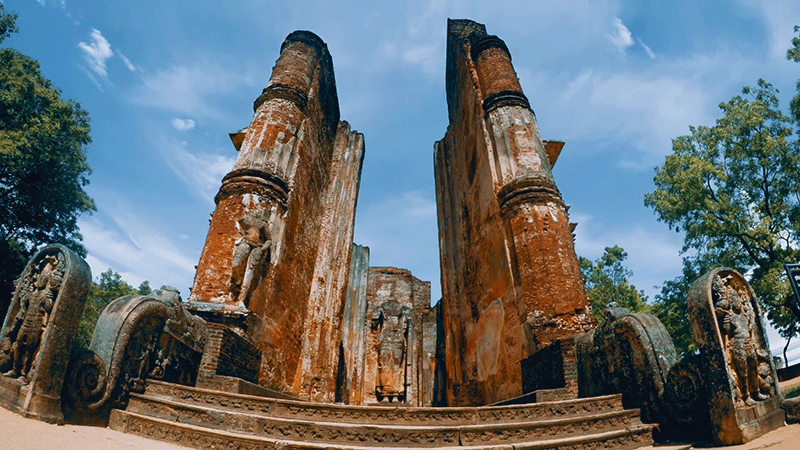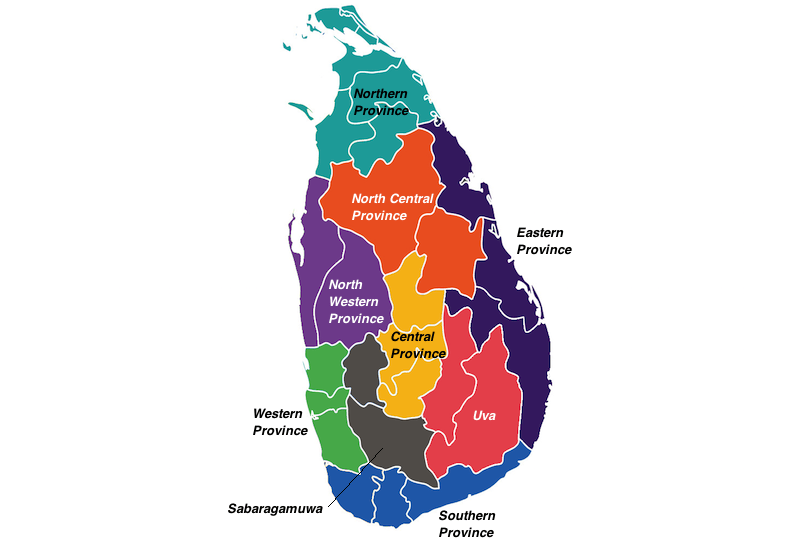Sri Lanka
is home to some of the best-preserved Asian monuments and 8 UNESCO World Heritage sites. All remarkably preserved to surpass more well-known world-class attractions. To this day, Sri Lanka’s centuries-old heritage lives on in the culture and the way of life of the Sri Lankan people. The rich tapestry of cultural practices, beliefs and the traditional way of life renews and revives this Island nation’s historical tie, creating an oasis of cultural richness in the modern-day.
Sri Lanka is one of the most bio-diverse islands in the world. The island is home to breathtaking natural sights and provides amazing nature experiences.
Location
This magical island of formerly known as “Ceylon” modern “Sri Lanka” and officially the “Democratic Socialist Republic of Sri Lanka” lies in the heart of the Indian ocean, 32km away from the Indian sub-continent, within the tropics between 5°55 and 9°50 north latitude and between 79°42 and 81°52 east longitude. It is 650km from the equator.
The rainfall
The rainfall pattern is influenced by monsoon winds from the Indian Ocean and the Bay of Bengel, As the winds encounter the mountain slopes of the central highlands. they unload heavy rains on the slopes and the southwestern areas of the island Some of the windward slopes receive over 5000mm (196in) in the wettest parts (southwestern part and central highland). The leeward slopes in the southeaster and northwestern receive below 900mm (35in). Periodic squalls occur and sometimes tropical cyclones bring overcast skies and rains to the southwest, northeast and eastern parts of the island. Between December to March, monsoon winds come from the northeast bringing moisture from the Bay of Bengal. Humid is typically higher in the southwest and mountainous areas and depends on the seasonal patterns of rainfall, and places like Colombo experience daytime humidity above 70% all year round, rising almost 26% during the monsoon season in June. Anuradhapura experiences a daytime low of 60% during the monsoon month of March, but a high of 78% during the November and December rains. In the central highlands; Kandy’s daytime humidity usually ranges between 70% and 79%.
Best Time to Visit Sri Lanka
Generally, Sri Lanka is a year-round holiday destination.
- December to April (Peak Season)
This is the best time to visit south coast, west coast, cultural triangle, and central highland.
- September to November (Shoulder Season)
The shoulder season is between September and November
- May to August (Off Season)
Generally, south coast, west coast, cultural triangle, and central highland is off season during this period it is finest on the east coast.
Climate
Due to the location of the island, the climate of Sri Lanka endows as tropical. The country is of considerable moisture with a warm climate moderated by ocean winds. The mean annual temperature in the low lands ranges between 26 C to 29°C. The mean annual temperature in the central highlands is 16°C, where frost may occur for several days in lanwary. January is the coldest month and the warmest are April and August.
Currency
The currency is Sri Lankan Rupee (LKR). The currency is divided into 100 cents (you rarely come across scents today). The currency notes are Rs5000, Rs2000, Rs1000, Rs500, Rs100, Rs50 and Rs20. The value fluctuates with world market rates. All commercial banks are authorized to exchange money and so are most tourist class hotels. AmEx, Master and Visa cards are also widely accepted. All unspent rupees converted from foreign currencies can be reconverted to the original currency on departure as long as encashment receipts can be produced.
Land Area
The total land area is 65,610km² with a length of 430km from North to South and a width of 225km from East to West. The Coastline is 1340km.
Topography
The core regions of the central highlands contain many complex topographical features such as ridges, peaks, plateaus, basins, valleys, and escarpments. The low land is practically flat with several small hills. The highest mountain is Pidurutalagala, 2524m and the highest waterfall is Bambarakanda, 263m.
Electricity
210-240 volts, 50Hz, Alternating Current / Plug sockets take the square and round pins
Ethnic Groups
Sinhalese 74.9%, Sri Lankan Tamil 11.2%, Sri Lankan Moors 9.3%, Indian Tamil 4.1%, other 0.5%.
The population growth rate is 0.62%. The population density is 348km?. (2019 census)
Religion
70.1% Buddhists, 12.6% Hindus, 9.7% Muslims, 6.2% Roman Catholics, 1.4% Christians and 0.05 others (2021 census)
Languages
Sinhalese and Tamil are the two official languages of Sri Lanka. English is fluently spoken by approximately 10% of the population and is widely used for education, scientific and commercial purposes. Members of the Burgher community speak variant forms of Portuguese Creole and Dutch with varying proficiency, while members of the Malay community speak a form of Creole Malay that is unique to the island.
Life Expectancy at Birth
78.5 female and 72 male
Economy
Sri Lanka is a developing economy based largely on agriculture and services.
Labour Force (2019 est.)
The participation rate from the total population is 52-3%. 25.3% of the labour population is employed in agriculture, 27.6% in industry, and 47.1 in services. The unemployment rate is 4.8%. The employed
Male population is 73% and female is 34.5%.
Main Industries
Most dynamic sectors are tourism, tea, apparel and textile, agriculture, If, mining, insurance and banking, petroleum refining. About 1.6 million Sri Lankans work abroad (2019 census)
Main Agricultural Products
Rice, sugarcane, grains, pulse, oilseeds, spices, tea, rubber, and coconut, fruit and vegetables.
Main Export Commodities
textile and apparel 52%, tea 1/%, spices, gems, coconut products, rubber manufactures and fish.
Main Export Partner countries
USA 24.8%, UK 8.9%, India 6.1%, Germany 5.7%, Italy 4.5%, Belgium 2.9%, Netherlands 2.9%, China 2.4%, Canada 2.1%, Turkey 2.1%, UAE 2% and Japan 1.9%.
Main Import Commodities
Textile and fabric, petroleum, electronic equipment and machinery, vehicles, and pharmaceutical products.
Main Import Partner Countries
India, China, UAE, Singapore and Japan


